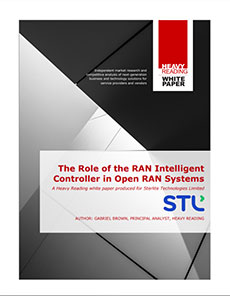The RIC comes in two forms, each adapted to specific control loop and latency requirements:
- The near real-time RIC (near-RT RIC): Provides programmatic control of open centralized units (O-CUs) and open distributed units (O-DUs) on time cycles of 10ms to 1 second.
- The non-real-time RIC (non-RT RIC): Provides higher layer policies that can be implemented in the RAN either via the near-RT RIC or via a direct connection to RAN nodes. Can be used in conjunction with artificial intelligence/machine learning (AI/ML) model training. It is specified for control loops of more than 1 second.
The RIC is more than a RAN controller, however. It is also an open platform that can host RAN control applications developed by specialist software suppliers that are external to the RIC vendor itself. These “xApps” (near-RT) and “rApps” (non-RT) are among the primary reasons why the RIC is a compelling component of the O-RAN architecture. XApps and rApps will enable innovation—in the form of RAN control algorithms—to enter the RAN at a pace that is orders of magnitude faster than is the case with today’s vendor-proprietary systems or centralized SON methods. Such innovation will help operators create differentiated network experiences that offer performance adapted to particular service types, user groups, or locations.
Operators that have said publicly that they are running trials of RIC solutions include AT&T, Deutsche Telekom, KDDI, and China Mobile.
O-RAN Alliance and the ONF 5G SD-RAN
There are several organizations involved in O-RAN specification and development. These include the 3GPP, the O-RAN Alliance, the Telecom Infra Project (TIP), the Small Cell Forum, the Open Networking Foundation (ONF), and the OpenAirInterface Software Alliance (OSA). Each of these groups is making a useful contribution to O-RAN development



